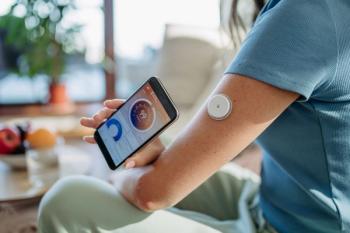
- Vol 64 No 05
- Volume 64
- Issue 06
Pruritus, pain and fissures in a 65-year-old woman
What is your diagnosis when you see vulvar fissures?
History
A 65-year-old woman with a history of well-controlled vulvar lichen sclerosus presents to your clinic with acutely worsening vulvar pruritus and pain that feel like paper cuts. She has been using topical triamcinolone 0.1% regularly without improvement. Examination reveals the findings seen in Figure 1.
A. Lichen sclerosus flare
Discussion
Figure 1 demonstrates
In this patient’s case, we are drawn away from a
The first step in evaluation of this patient would be to obtain a sample for a wet preparation with saline and 10% KOH and consider a yeast culture (identify the species if positive).1,5 The advantage to performing direct microscopy is that you can obtain an immediate diagnosis. However, yeast is missed on 50% of wet mounts. So, if the wet prep is negative, or the patient has not responded to prior antifungal treatments, a yeast culture to identify the species and guide your treatment should be considered. Yeast cultures are most helpful in recurrent or resistant infections.
Vulvar candidiasis
Up to 75% of all women will have at least one episode of vulvovaginal candidiasis with 10% to 20% of women being classified as having complicated infections.6 Complicated infections are defined as those that are recurrent, severe, or that occur in patients with diabetes or who are immunocompromised.4 Most commonly candidiasis is caused by
Most commonly, patients present with vulvar pruritus and may have thick white vaginal discharge.4,5 On examination you may also see vulvar fissures, excoriations, and erythema. The diagnosis is confirmed via vaginal pH measurement (from the lateral side wall of the vagina) and wet mount. Classic microscopic findings include pseudohyphae (Figure 2). As mentioned above, a yeast culture may be beneficial in cases of recurrent or resistant infections, defined as four or more infections per year, or infections that are unresponsive to treatment.6 We would recommend treating this patient for complicated vulvovaginal candidiasis given her topical corticosteroid use. Treatment can be topical or oral. Topical treatments to the vulva include miconazole nitrate 2% cream twice daily for up to 7 days or nystatin ointment 100,000 units/gram two to three times per day for up to 7 to 14 days.6 Intravaginal antifungal treatment (numerous azole medications are available) should be given along with the topical treatment to the vulva. Oral treatments include fluconazole, 150 mg for every 72 hours for three doses, before starting a maintenance antifungal regimen.6 For recurrent infections, weekly fluconazole can be used for up to 6 months.
For additional information, a yeast app is available in the app store (type in ISSVD). This app was developed by the International Society for the Study of Vulvovaginal Disease with an unrestricted educational grant from Prestige, Inc., manufacturers of Monistat. The company had no input into the app content, or development of treatment recommendations.
Lichen sclerosus
This is a chronic inflammatory condition of the skin that is likely autoimmune in nature. Patients typically present with vulvar pruritus, burning or pain with intercourse.4 They may also be asymptomatic.
As mentioned previously, treatment is with topical corticosteroids. For lichen sclerosus, clobetasol 0.05% ointment is used up to twice daily for 1 month followed by daily for 2 months and then the patient is maintained on topical triamcinolone 0.1% ointment daily. An alternative regimen is to treat as above, for 3 months with clobetasol 0.05% ointment, then use clobetasol 0.05% ointment three times weekly long term.
Vulvovaginal atrophy
A decrease in circulating estrogen that comes with menopause results in thinning of vaginal epithelium.1 This increases the likelihood of erosions and secondary infection.1 Patients often present with complaints of dryness, pruritus, and dyspareunia. Erosions or fissuring from friction may be seen.1 The diagnosis is made based on the clinical appearance of the vaginal mucosa and vulvar skin. On wet preparation, you would see parabasal cells (small, round, immature epithelial cells), elevated vaginal pH (greater than 4.5) and loss of lactobacilli.1 First-line treatment is the use of lubricants.7 Patients who do not respond to this therapy may benefit from a trial of local estrogen therapy, ospemifene, or prasterone.7
Disclosures:
Hope K. Haefner, MD, is on the advisory board of Prestige, Inc.
References:
- Edwards L. Genital Dermatology Atlas. Philadelphia, PA: Lippincott Williams and Wilkins; 2004
- Edwards L. Vulvar fissures: causes and therapy. Dermatol Ther. 2004;17(1):111-116.
- Dalziel K, Wojnarowska F. Long-term control of vulval lichen sclerosus after treatment with a potent topical steroid cream. J Reprod Med. 1993;38:25-27.
- Lee A, Bradford J, Fischer G. Long-term management of adult vulval lichen sclerosus. A prospective cohort study of 507 women. JAMA Dermatol. 2015:1061-1067.
- Wilkinson EJ, Stone IK. Atlas of Vulvar Disease. In: 3rd ed. New York: Wolters Kluwer/Lippincott Williams & Wilkins; 2012:139-142.
- Centers for Disease Control and Prevention. Sexually Transmitted Diseases Treatment Guidelines, 2015. MMWR Recomm Rep. 2015;64(No. RR-3):1-137.
- The North American Menopause Society. Management of symptomatic vulvovaginal atrophy: 2013 position statement of The North American Menopause Society. Menopause. 2013;20:888–902. quiz 3–quiz 4.
Articles in this issue
over 6 years ago
The importance of intervention: When was this baby in trouble?over 6 years ago
Fighting back with loveover 6 years ago
How to optimize imaging in the obese gravidaover 6 years ago
Antibiotic prophylaxis and operative vaginal deliveryover 6 years ago
Barriers to abortion training in ob/gyn residencyNewsletter
Get the latest clinical updates, case studies, and expert commentary in obstetric and gynecologic care. Sign up now to stay informed.











